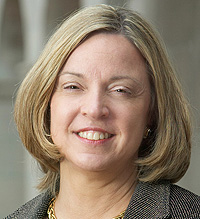Helping ease Halloween fears
To make sure Halloween festivities are full of fun, not fear, Professor of Psychology Deborah Best suggests that parents and volunteers try to experience the holiday through children’s eyes. After all, scary masks, ghostly décor and haunted houses are enough to spook many adults, so imagine how frightening they can be for children – even in a safe environment.
“Most children can’t distinguish fantasy from reality until they are about four years old, so knocking on a stranger’s door in a clown suit can be confusing and scary for younger children,” said Best, who has studied developmental psychology for more than 40 years.
She offers a few simple tips to help ease the most common Halloween fears and anxieties – lessons she wants students to understand before the annual event and ones that parents can take home, too.
If scary costumes freak out your child…
When selecting a costume, it’s very important to let children choose. Toddlers especially love trying on familiar items such as their parents’ clothes, so a big hat and colorful tie might be all the costume he needs or wants. Parents and volunteers should consider their costume choices as well. Encourage positivity by talking about the kids’ costumes and building them up so they’re familiar with them before trick-or-treating. And if they don’t want to dress up or ask to take off their mask, it’s okay.
If your child is nervous about trick-or-treating…
She’s probably just afraid of the unknown. Help ease her fears by trick-or-treating before it gets dark and starting at a neighbor or friend’s home. Seeing familiar faces and how much fun other kids are having might get her in the festive spirit. If not, take your cues from her and do something else.
If you’re afraid Halloween sends mixed signals about religious beliefs…
Relax. From a child’s perspective, Halloween is about dressing up and getting candy, not religious meaning. Rest-assured, dressing like a devil or a monster for one night won’t jeopardize a child’s belief systems. In fact, dressing like scary characters actually helps children overcome their fears.
Best adds, “It’s important for volunteers, students and parents to remember that what seems fun and harmless to an adult may be inadvertently terrifying to a young child. Try to focus on age-appropriate activities and follow the child’s lead to create truly happy Halloween memories.”




